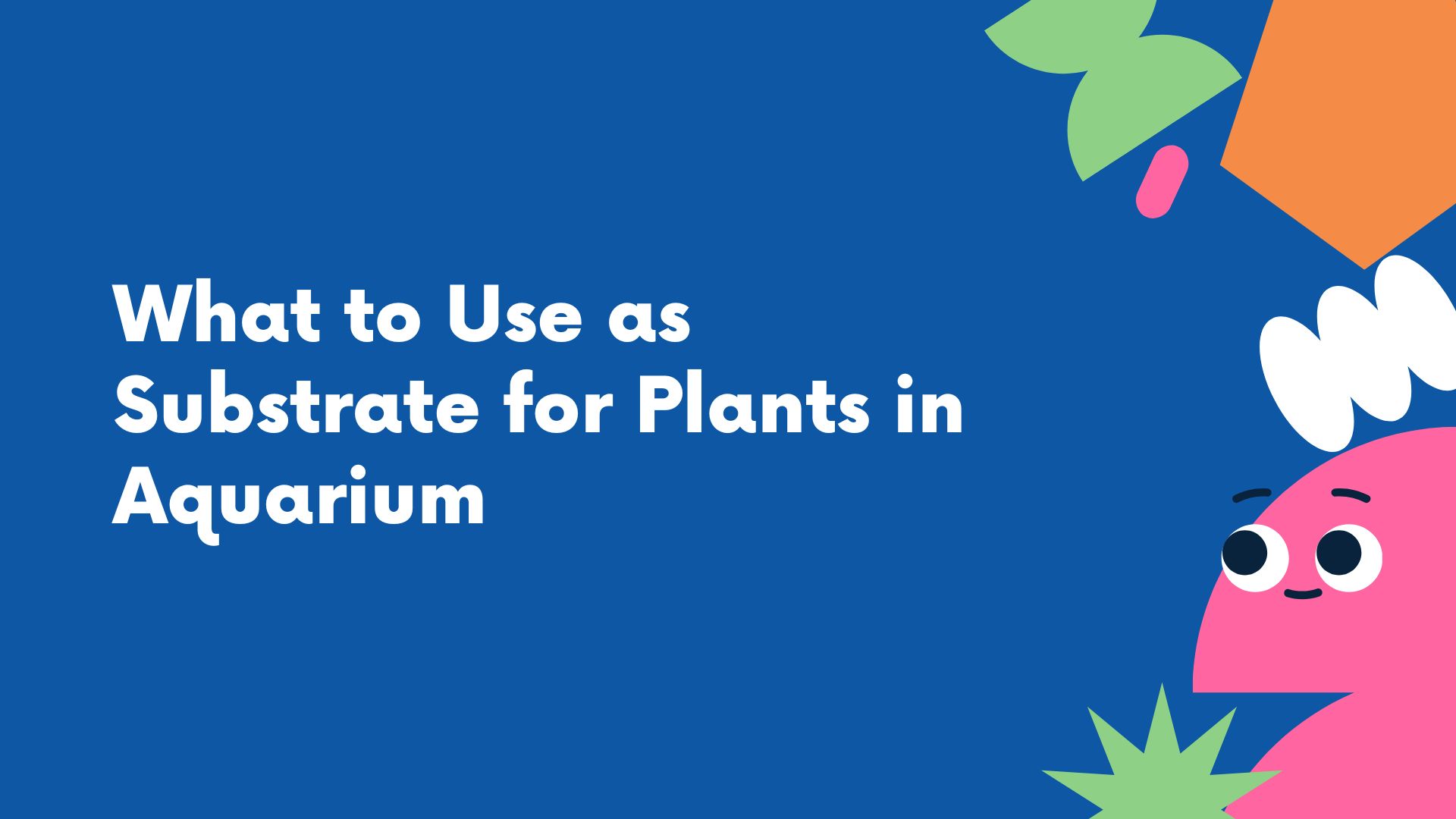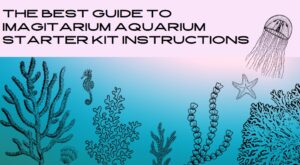Choosing the right substrate for plants in an aquarium is crucial for their health and growth.
A nutrient-rich substrate, such as aquarium soil or plant-specific gravel, provides essential nutrients and support for plant roots.
This base layer not only anchors plants but also helps to maintain water quality, which is vital for both plants and aquatic life.

Some popular choices include eco-complete substrates, which offer both decoration and nourishment, and inert options that allow for greater customization with fertilizers.
Understanding the unique needs of the plants, such as light conditions and root depth, can guide the selection process.
This knowledge will help ensure a thriving aquatic environment that is visually appealing and supports the ecosystem.
By exploring various types of substrates, hobbyists can create a planted aquarium that not only looks beautiful but also sustains healthy plant life.
Readers will discover how the right substrate leads to lush, vibrant growth, making their tank a standout feature in any space.
Contents
- 1 Table of Contents
- 2 Understanding Substrates
- 3 Choosing the Right Substrate
- 4 Popular Substrate Options
- 5 Substrate Preparation and Maintenance
- 6 Advanced Considerations
- 7 Substrate Troubleshooting
- 8 FAQs:
- 8.1 What to use as substrate for plants in aquarium setups?
- 8.2 Can I use sand as a substrate for plants in aquariums?
- 8.3 Is gravel suitable as a substrate for plants in aquariums?
- 8.4 What is the best substrate for beginners in a planted aquarium?
- 8.5 Do I need to layer substrates in a planted aquarium?
Table of Contents
Understanding Substrates
Substrates play a critical role in creating a healthy environment for plants in aquariums. They support plant growth, help maintain water quality, and influence the overall ecosystem in the tank.
Purpose of a Substrate in Aquariums
The substrate serves multiple purposes in an aquarium.
First, it provides a base for plants to anchor their roots. This anchoring is vital for stability as plants grow and thrive.
Additionally, substrates can hold nutrients essential for plant growth. These nutrients can come from fertilizers or the substrate material itself.
Moreover, substrates help maintain the biological balance in the aquarium.
Beneficial bacteria live in the substrate and break down waste products, promoting a healthier environment.
Types of Substrates
There are several types of substrates suitable for planted aquariums. Each type has unique properties.
- Gravel: Common and affordable, gravel provides good drainage. However, it may not retain nutrients well.
- Sand: Fine and smooth, it is easy for plants to root in. It has low nutrient retention, which requires regular fertilization.
- Specialized Plant Substrates: These are designed for aquarium plants. They often contain essential nutrients and promote healthy root growth.
- Inert Substrates: These do not provide nutrients but can support plant roots. They work well when combined with fertilizers.
Choosing the right substrate depends on the type of plants and the desired tank setup.
Substrate and Water Quality
The substrate also impacts water quality in the aquarium. Substrates can influence the pH, hardness, and nutrient levels in the water.
Natural substrates like volcanic soil help buffer pH levels and provide minerals. This supports plant growth while maintaining a stable environment.
Proper maintenance of the substrate is essential.
Regular cleaning helps prevent the buildup of harmful substances.
Aquarists should monitor water quality closely. Good substrates, combined with regular cleaning, can lead to a thriving aquarium ecosystem.
Choosing the Right Substrate
Selecting the right substrate is vital for the health of aquarium plants. Factors like nutrient availability, compatibility with different plant types, and aesthetic appeal should all be carefully considered to create a thriving environment.
Factors To Consider
When choosing a substrate, one must think about several key factors.
Nutrient content is crucial since some plants require rich substrates, while others thrive in inert materials.
Grain size also plays a role; finer substrates can compact too much, limiting root growth, whereas coarse substrates may not anchor plants well.
pH levels and water hardness can also be affected by substrate choice.
Some materials, like certain types of gravel or sand, may alter these conditions.
Lastly, consider the thickness of the substrate layer. A depth of 2-3 inches is often ideal for most plants to establish healthy roots.
Compatibility With Plant Types
Different plants have unique needs when it comes to substrate.
Root feeders, such as Amazon swords or Cryptocorynes, prefer substrates rich in nutrients. Substrates like ADA aqua soil or CaribSea Eco-Complete work well in these cases.
For stem plants or floating plants, a lighter substrate or even sand may suffice. These plants often benefit from additional fertilizers and root tabs.
It’s important to match the substrate to the specific requirements of the plants chosen. Researching the needs of plants helps ensure a successful aquarium setup.
Aesthetic Considerations
The visual appeal of the aquarium is another key aspect. The substrate color and texture can greatly affect the overall look.
Dark substrates tend to enhance the colors of plants and fish, creating a striking contrast.
When planning the layout, layering different substrates can add depth and interest.
For example, a base layer of nutrient-rich soil topped with a layer of sand can look appealing and functional.
Choosing shapes and sizes that mimic natural habitats can also enhance the aesthetic. Using natural materials encourages a more realistic environment for both plants and aquatic life.
Popular Substrate Options
Choosing the right substrate is essential for a healthy planted aquarium. Various options each offer unique benefits and drawbacks that can affect plant growth and overall tank health. Below are several popular choices for aquarium plant substrates.
Gravel
Gravel is a common choice for aquariums due to its availability and affordability. It comes in various sizes and colors, allowing for customization of the tank’s appearance.
Benefits:
- Provides good drainage.
- Helps anchor larger plants.
Drawbacks:
- May not supply nutrients unless supplemented.
- Can trap detritus, requiring regular cleaning.
Gravel works well for tanks with fewer nutrient-demanding plants. Some hobbyists use root tabs to add necessary nutrients for plant growth.
Sand
Sand is another popular substrate for aquariums. It is fine and smooth, making it comfortable for certain fish and invertebrates.
Benefits:
- Promotes a natural look.
- Great for bottom-dwelling fish.
Drawbacks:
- Can compact easily, restricting root growth.
- May not provide nutrients unless combined with soil or additives.
Using sand may require additional measures for plant care, such as liquid fertilizers or nutrient-rich layers beneath the sand.
Aquatic Soil
Aquatic soil is a specialized substrate designed specifically for planted tanks. It is rich in nutrients and offers excellent moisture retention.
Benefits:
- Contains essential nutrients for plant growth.
- Supports root development effectively.
Drawbacks:
- Can be more expensive than other options.
- May cloud water until settled.
Aquatic soil is often recommended for tanks with a lot of aquatic plants, where nutrient needs are high. It creates a strong foundation for thriving plant life.
Clay-Based Substrates
Clay-based substrates, like laterite, are another option available for aquarium plants. They are rich in nutrients and can enhance plant health and growth.
Benefits:
- Provides essential minerals.
- Allows for good aeration in the substrate layer.
Drawbacks:
- Can become messy and muddy during setup.
- May require capping with gravel to maintain appearance.
Clay substrates are excellent for aquarists looking for a natural solution to grow heavy-rooted plants without needing constant fertilization.
Commercial Aquatic Plant Media
Commercial aquatic plant media are pre-packaged substrates designed specifically for aquariums with plants. They typically combine various materials to optimize growth.
Benefits:
- Formulated with the right balance of nutrients.
- Easy to use, requiring no additional preparation.
Drawbacks:
- More costly compared to DIY options.
- Selection may be limited based on brand.
These specialized substrates cater to the needs of both novice and experienced hobbyists. They simplify the setup process while ensuring plants receive necessary nutrients for optimal growth.
Substrate Preparation and Maintenance
Proper preparation and maintenance of aquarium substrate are crucial for healthy plant growth. This process includes layering the substrate correctly, cleaning it periodically, and monitoring nutrient levels.
Each of these steps ensures that the aquatic environment stays balanced and conducive to plant health.
Proper Substrate Layering
Layering is important for creating a suitable environment for plant roots. A typical setup includes three layers: a bottom layer of larger particles, a nutrient-rich middle layer, and a top layer of fine gravel or sand.
- Bottom Layer: This consists of larger substrates like crushed lava rock or coarse gravel. It promotes water flow and root growth.
- Middle Layer: The nutrient-rich layer can include specialized aquarium soil or clay-based substrates. This layer feeds the plants and supports their development.
- Top Layer: A fine layer of gravel or sand holds the middle layer in place and prevents it from clouding the water.
Always remember to keep the layers distinct, as mixing them can disturb nutrient levels.
Cleaning and Water Changes
Regular maintenance of substrate cleanliness keeps the aquarium healthy.
During water changes, siphon the substrate gently to remove debris without disturbing the roots.
- Frequency: It is beneficial to perform water changes every 1-2 weeks, depending on the tank’s bioload.
- Siphoning: Use a gravel vacuum to clean the top layers without disrupting the plant roots. This helps to remove uneaten food and waste.
- Avoid Over-Cleaning: While it’s important to clean, over-siphoning can remove beneficial bacteria necessary for a balanced ecosystem.
Routine maintenance helps keep algae at bay and maintains clear water quality.
Monitoring Nutrient Levels
Monitoring nutrient levels in the substrate ensures plants receive what they need.
Regular tests can help identify deficiencies or excesses.
- Nutrients to Check: Key nutrients include nitrogen, phosphorus, potassium, and trace minerals such as iron.
- Testing Kits: Use easy-to-read aquarium test kits to determine nutrient levels. This helps in making informed decisions about fertilization.
- Fertilization: If nutrient levels are low, consider adding liquid fertilizers or root tabs based on plant needs. Regular monitoring reduces risks of nutrient burn or deficiency.
Advanced Considerations
When selecting substrate for plants in an aquarium, it’s important to consider additional factors that can affect plant health and growth.
Understanding how substrates interact with CO2 levels, the needs of different types of plants, and the potential for DIY mixes can enhance the aquatic environment.
CO2 Supplementation and Substrate
Many aquatic plants benefit from CO2 supplementation, especially in nutrient-rich substrates.
CO2 enhances plant growth, but its effectiveness can depend on the substrate type.
Nutrient-rich substrates like Seachem Flourite release nutrients slowly, complementing CO2 use.
It’s essential to ensure that the substrate can retain nutrients while allowing gas exchange.
An inert substrate may not provide the necessary nutrients without CO2. This leads to poor plant growth.
Therefore, a combination of nutrient-rich substrate and CO2 system can yield the best results.
Root Feeders vs. Water Column Feeders
Plants can be categorized as root feeders or water column feeders, and this distinction affects substrate choice.
Root feeders, such as Cryptocoryne and Anubias, depend on nutrients from the substrate.
They thrive in nutrient-rich soils that retain moisture and nutrients effectively.
Conversely, water column feeders, such as Hornwort, absorb nutrients directly from the water.
For these plants, a lighter substrate like gravel may be sufficient, as they rely more on water column additives.
When choosing substrate, knowing the plant types helps in providing the right environment for their growth.
DIY Substrate Mixes
Creating a DIY substrate mix can tailor the aquarium environment to specific plants’ needs.
A common mix may include topsoil, gravel, and activated carbon.
Using organic topsoil provides a source of essential nutrients.
Adding gravel or sand on top ensures proper drainage and prevents compaction.
For better water quality, incorporating activated carbon helps filter impurities.
Experimenting with DIY mixes can lead to successful growth, but it’s crucial to test the mix for contaminants before use. This approach can avoid introducing harmful elements into the aquarium.
Substrate Troubleshooting
Maintaining a healthy substrate is critical for successful plant growth in an aquarium. Common issues include algae growth, substrate compaction, and the need for rejuvenation. Here’s how to tackle these challenges effectively.
Algae Growth and Control
Algae can quickly overtake an aquarium substrate, causing problems for aquatic plants. To combat algae, it’s essential to manage light levels.
Reducing the amount of light or adjusting its duration can help.
Adding live plants can also outcompete algae for nutrients.
Using a substrate like Eco-Complete can enhance plant growth while helping to reduce algae.
Regular cleaning of the substrate is necessary.
Removing debris through siphoning helps prevent algae buildup.
Additionally, consider introducing clean-up crew species like snails or certain fish species that feed on algae.
Dealing With Compaction
Compacted substrate can restrict root growth and water flow. This leads to unhealthy plants and can cause nutrient imbalances.
To avoid compaction, choose a substrate with a larger grain size, which allows for better water circulation. Substrates like gravel or coarse sand can be effective.
If compaction has already occurred, gently stirring the substrate can help.
This action can break up compacted areas, improving aeration.
In extreme cases, consider replacing the substrate partially or completely to restore a healthy environment for plant roots.
Substrate Rejuvenation
Rejuvenating the substrate ensures that it continues to support plant health.
Over time, substrates can lose vital nutrients. A good practice is to periodically add nutrient-rich topsoil or plant-specific fertilizers.
When using fertilizers, always follow the recommended dosing guidelines.
Over-fertilization can lead to algae growth and other issues.
Another method is to replace a portion of the substrate. This provides fresh nutrients while minimizing disturbance to established plants.
Regular monitoring of nutrient levels will help gauge when rejuvenation is necessary.
FAQs:
What to use as substrate for plants in aquarium setups?
For planted aquariums, you can use nutrient-rich substrates like aquarium soil, laterite, or specialized plant gravel. These substrates provide essential nutrients for plant growth and create a stable base for rooting.
Can I use sand as a substrate for plants in aquariums?
Yes, sand can be used as a substrate, but it lacks nutrients needed for plants. You can mix it with nutrient-rich layers or use root tabs to supplement plant growth.
Is gravel suitable as a substrate for plants in aquariums?
Gravel can be used, but it should be combined with nutrient additives or a base layer of enriched substrate to support healthy plant growth.
What is the best substrate for beginners in a planted aquarium?
Aquarium soil is often the best choice for beginners. It is nutrient-rich, easy to use, and promotes optimal growth for aquatic plants.
Do I need to layer substrates in a planted aquarium?
Layering is optional but beneficial. You can use a nutrient-rich base layer topped with inert sand or gravel for aesthetic appeal and plant support.




